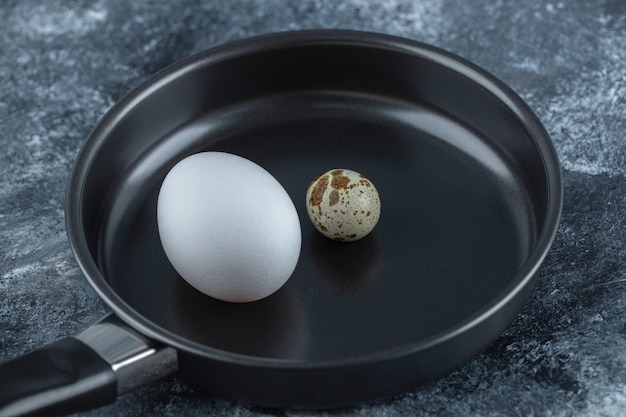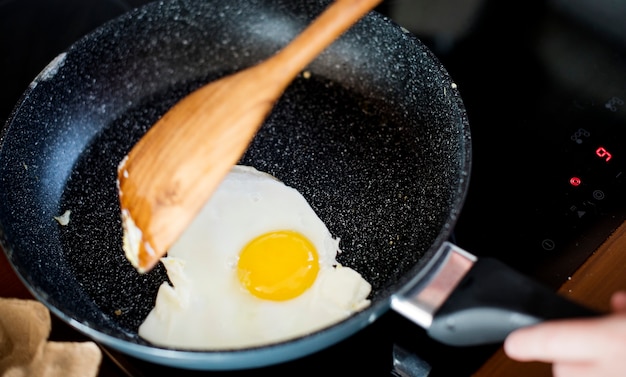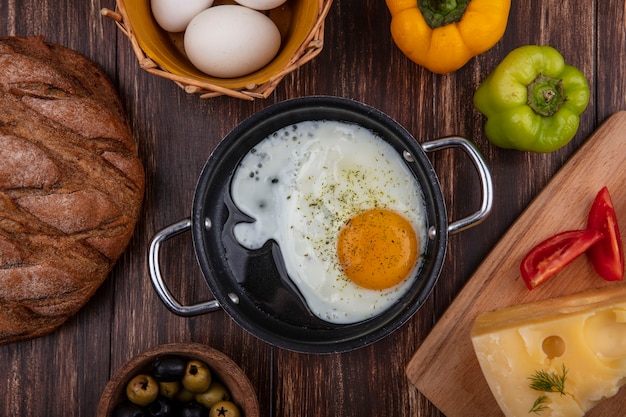Ah, the soft-boiled egg. A culinary masterpiece that, when executed perfectly, delivers a symphony of textures: a delicate, set white surrounding a gloriously runny yolk that oozes with velvety richness. But let's be honest, achieving that perfect soft-boiled egg can be a bit of a culinary tightrope walk. You're always teetering on the edge of overcooking, transforming your dream of a silky yolk into a hard, rubbery nightmare. Fear not, fellow egg enthusiasts! I'm here to guide you through the intricacies of soft-boiled perfection, sharing my hard-earned wisdom and tips, so you can finally conquer the art of the perfect soft-boiled egg.
My journey to mastering the soft-boiled egg has been a long one, paved with a few missteps along the way. But through trial and error, I've discovered that it's not just about blind luck. It's about understanding the science behind it, embracing precision, and paying attention to detail. So, grab your kettle, a trusty timer, and a mug (for those exquisite poached eggs!), and let's embark on this egg-cellent adventure together!
(Part 1) The Science of soft-boiled eggs: Unveiling the Egg's Transformation

Before we dive into the precise timing, let's demystify the science behind the soft-boiled egg transformation. Imagine the egg as a delicate orchestra of protein and water. When you apply heat, the protein molecules within the egg, like musicians warming up, begin to unravel and bind together. This dance creates the firm, opaque texture we associate with cooked eggs. But here's the key: this unfolding drama happens at different temperatures for the white and the yolk.
The White's Firming Up: A Temperature-Driven Change
- White: The egg white, the first to take center stage, starts to firm up around 60°C (140°F), becoming opaque and set. It's like a delicate melody, subtly changing its character with each degree of heat.
- Yolk: The yolk, a bit slower to join the symphony, starts to firm up around 65°C (149°F). The longer it's exposed to heat, the more its texture changes, moving from a smooth, velvety fluidity to a firmer consistency.
This delicate interplay between the white and yolk is the key to mastering the soft-boiled egg. We want the white to be fully set, providing a protective haven for that velvety yolk to remain lusciously runny.
(Part 2) choosing the right eggs: A Tale of Freshness and Texture

Now, not all eggs are created equal, especially when it comes to soft-boiling. The age and size of the egg can significantly influence the cooking time and the final outcome. fresh eggs, with their plump yolks and thick whites, are a bit more challenging to peel due to a tighter membrane. They also require a bit more time to cook, which can lead to an overcooked yolk. I generally prefer slightly older eggs, as they tend to peel more easily, and their thinner whites cook faster, making it easier to achieve that perfect balance of doneness.
Freshness Matters: Understanding the Egg's Journey
When you crack open a fresh egg, the yolk stands tall, vibrant and prominent, while the white is thick and robust. This combination means the white will take longer to set, potentially leading to a hard yolk. On the other hand, an older egg will present a flatter yolk and a thinner white, cooking faster and making it easier to achieve that delightful runny yolk we crave.
(Part 3) The Perfect Soft-Boiled Egg: Timing Guide for Every Taste

This is where the magic happens – the timing guide for achieving different degrees of doneness. It's essential to remember that this is a general guide, and the cooking time can fluctuate based on the size and freshness of your eggs. Always be mindful, and be prepared to adjust the cooking time slightly if needed.
Timing Chart for Soft-Boiled Eggs: A Journey from Velvety to Firm
| Doneness | Time (minutes) | Yolk Texture | Ideal for... |
|---|---|---|---|
| Very Soft | 2-3 | Completely runny, like liquid gold | Dipping soldiers, a luxurious breakfast treat |
| Slightly Firm | 3-4 | Slightly firm around the edges, but still lusciously runny in the center | A classic soft-boiled experience, with a touch of texture |
| Medium Firm | 4-5 | Firm around the edges, with a creamy, slightly runny center | Adds a bit more stability to a salad or sandwich |
| Hard | 6-7 | Completely firm, perfect for chopping into salads | Hard-boiled egg aficionados, salads, deviled eggs |
Remember, it's always better to undercook than overcook. You can always add a few precious seconds to your cooking time if needed, but you can't undo an overcooked egg. Practice patience and precision, and you'll soon master the art of timing.
(Part 4) The Boiling Process: A Symphony of Heat and Technique
Now that we've mastered the timing, let's get into the actual boiling process. Each step is essential, playing its part in creating the perfect soft-boiled symphony.
1. The Water's Role: A Gentle Embrace for Even Cooking
Fill a pot with enough cold water to generously cover the eggs by at least an inch. This ensures even heat distribution, preventing the eggs from sticking to the bottom and creating a more uniform cooking environment.
2. The Boiling Point: Igniting the Transformation
Bring the water to a rolling boil. This ensures that the eggs cook quickly and evenly, minimizing the risk of uneven doneness.
3. Adding the Eggs: A Gentle Descent into the Heat
Gently lower the eggs into the boiling water using a spoon or slotted spatula. This prevents cracking and ensures they cook evenly, preserving their beautiful integrity.
4. The Timer's Call: Marking the Moment of Transformation
Immediately start your timer, using the timing guide as your roadmap. This is where precision and patience play key roles. Remember, even a few seconds can make a difference in the final outcome.
(Part 5) The Cooling Process: A Crucial Step for Easy Peeling
Once the timer sounds its sweet melody, the next step is crucial - cooling the eggs. This step is the key to preventing the yolks from continuing to cook, ensuring they remain silky smooth, and making peeling a breeze.
ice bath Magic: A Sudden Temperature Shift for a Perfect Peel
Immediately transfer the eggs into a bowl of ice water. The sudden temperature change stops the cooking process in its tracks and magically loosens the shell from the white, making peeling a delightful, rather than a frustrating, experience. Let the eggs cool in the ice bath for a few minutes, then drain the water.
(Part 6) The Art of Peeling: Unveiling the Perfect Soft-Boiled Gem
Finally, it's time to unveil the perfectly cooked egg! Peeling a soft-boiled egg can be a bit of a delicate dance, but with a few simple techniques, you can avoid those frustrating bits of shell clinging to the white.
Peeling Tips: A Gentle Guide to Shell Removal
- Crack the shell: Gently tap the egg all over to create tiny cracks without completely breaking the shell.
- Roll it: Roll the egg on the counter to help separate the shell from the white, giving it a bit of a massage.
- Start at the bottom: Peel the shell from the bottom, gently working your way up. If you start at the top, you risk damaging the delicate yolk beneath.
- Use a spoon: Use a spoon to carefully pry off stubborn bits of shell, providing a gentle assist.
Be gentle, patient, and kind to your eggs. If the shell is being particularly stubborn, simply place the egg back in the ice water for a few minutes before trying again. Persistence and a touch of TLC will always win out.
(Part 7) Serving Your Masterpiece: A Celebration of Flavour and Texture
And now, the moment of truth – enjoying your perfectly cooked egg! Serve it with your favourite toppings, letting your taste buds guide you. Salt and pepper, a whisper of butter, a sprinkle of paprika – the possibilities are endless.
Serving Suggestions: From Classic to Creative
- Soldiers: Serve your soft-boiled egg with toasted soldiers for a classic dipping experience, a delightful play on textures and flavours.
- Salad: Add a soft-boiled egg to your salad for a protein boost and a creamy, luxurious touch.
- Breakfast Sandwich: Transform your soft-boiled egg into a delicious breakfast sandwich by adding it to toast with bacon, sausage, or your favourite fillings. A hearty and satisfying start to the day.
- poached eggs: For a more elegant presentation, try poaching your soft-boiled eggs. Crack the egg into a small bowl, gently lower it into simmering water, and cook for about 3-4 minutes. The result is a beautifully set egg, with a gloriously runny yolk.
Experiment, explore, and let your creativity flow! There are endless ways to enjoy this culinary gem.
(Part 8) Troubleshooting: Conquering Common Egg Challenges
Even the most experienced cooks can face a few hiccups along the way. But don't despair! With a bit of knowledge and a dash of problem-solving, you can conquer any egg-related challenge.
1. Hard Yolk: Preventing the Overcooked Tragedy
Problem: You've overcooked the egg, resulting in a hard, disappointing yolk. A culinary tragedy, indeed!
Solution: Reduce the cooking time next time. Start with a shorter time and gradually increase it until you achieve your desired doneness. Patience and practice are key to mastering the perfect timing.
2. Cracked Eggs: Preventing Shell Mishaps
Problem: Your eggs cracked while boiling, leaving you with a messy and potentially overcooked situation.
Solution: Add a tablespoon of salt to the boiling water. The salt helps strengthen the egg white, making it less likely to crack. You can also try adding the eggs to the water gently, avoiding a harsh drop.
3. Shell Sticking to the Egg: A Smooth Peeling Process
Problem: The shell is stubbornly stuck to the egg white, making peeling a frustrating ordeal.
Solution: Make sure you cool the eggs properly in ice water. This helps loosen the shell and makes it easier to peel. You can also try gently tapping the egg all over to loosen the shell before peeling.
(Part 9) Beyond Soft-Boiled: Exploring the World of Eggs
While soft-boiled eggs are a culinary classic, the world of eggs is vast and full of possibilities. If you're feeling adventurous, explore these other egg-citing cooking methods!
1. hard-boiled eggs: A Firm and Versatile Option
For a firmer texture, you can hard-boil your eggs. Simply follow the same steps as for soft-boiled eggs, but cook them for a longer time (8-10 minutes). Hard-boiled eggs are perfect for salads, sandwiches, deviled eggs, and more.
2. Poached Eggs: A Delicate and Elegant Treat
Poaching is a technique that involves cooking an egg in simmering water, resulting in a soft, velvety texture with a runny yolk. Poached eggs are a beautiful addition to breakfast, brunch, or even a light dinner.
3. scrambled eggs: A Classic Breakfast Comfort
Scrambled eggs are a classic breakfast staple, simple yet satisfying. Simply whisk the eggs with milk or cream, then cook them in a pan over low heat until they reach your desired texture. Scrambled eggs can be enjoyed plain or with cheese, vegetables, or other toppings.
4. Omelets: A Culinary Canvas for Creativity
Omelets are similar to scrambled eggs but are cooked in a thin layer in a pan. They are often filled with cheese, vegetables, or other ingredients, allowing you to create a culinary masterpiece. Omelets are a versatile and delicious option for breakfast, lunch, or dinner.
FAQs: Answering Your Egg-cellent Questions
1. What if I don't have an ice bath?
You can simply run cold water over the eggs for a few minutes to cool them down quickly. However, an ice bath is more effective at stopping the cooking process and ensuring a smoother peeling experience.
2. Can I use older eggs for soft-boiling?
Yes, slightly older eggs are actually easier to peel than fresh eggs. The membrane is less tight, making it easier to remove the shell. They also tend to cook faster, making it easier to achieve that perfect soft-boiled texture.
3. What's the best way to store leftover soft-boiled eggs?
Store them in the refrigerator in a sealed container with a little bit of cold water. This helps prevent them from drying out and keeps them fresh for a few days.
4. Can I reheat soft-boiled eggs?
While you can reheat them, it's best to enjoy them fresh. Reheating can affect the texture, especially the yolk. The runny, silky texture we cherish is best enjoyed immediately.
5. How do I know if an egg is bad?
You can tell if an egg is bad by its appearance and smell. If the egg has a cracked shell or a foul odor, it's best to discard it. You can also test the egg by placing it in a bowl of water. If it sinks to the bottom, it's fresh. If it floats, it's likely old and should be discarded.
With a little practice, a dash of confidence, and this guide by your side, you'll be whipping up perfect soft-boiled eggs in no time. So, grab your favourite mug, get ready to enjoy a truly delightful breakfast, and happy cooking!
Everyone is watching

How to Cook Frozen Lobster Tails Perfectly: A Step-by-Step Guide
RecipesLobster. Just the word conjures up images of lavish meals, special occasions, and a taste of luxury. But let's...

Pigs in a Blanket Cooking Time: How Long to Bake for Perfect Results
RecipesAh, pigs in a blanket. Just the name conjures up images of those delightful little parcels of crispy pastry en...

Pork Fillet Cooking Time: How Long to Cook It Perfectly
RecipesPork fillet, or tenderloin as it's sometimes called, is a real favourite in our house. It's so versatile, and...

The Ultimate Guide to Cooking Delicious Frankfurters
RecipesLet's face it, we all love a good frankfurter. It's a classic, simple, and always satisfying. But let's be rea...

The Ultimate Guide to Tender, Juicy Pulled Pork
RecipesRight, let's talk pulled pork. It's one of those dishes that just screams "comfort food," doesn't it? I mean...
